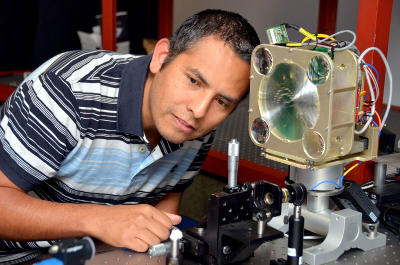River subbasins more depleted than
official figures show
09 April 2024
Published online 30 June 2016
A team of researchers devised a way to increase the bandwidth of optical communication by up to 100 fold.

Such information-carrying light is relayed through long reflective glass fibers, such as the transatlantic telecommunications optic fiber cable that lies submerged in the Atlantic Ocean, connecting continents.
With these different possibilities to modulate light for telecommunication, we are nevertheless approaching an upper bandwidth limit in the face of the ever-growing demands of an information boom.
Now, a team of researchers from South Africa and Tunisia have come up with a strategy to increase the information carrying capacity of light by up to 100 fold, promising to afford higher bit rates for the next generation of optical networks1.
The team noticed that another property of light remains untapped; namely, the intensity distribution of light — the shape of dark and light bands that appear when light hits a screen.
These patterns are unique and therefore, combinations of patterns can be multiplexed to encode further information into light.
Currently, only one pattern of light is used. The number of additional patterns that can be exploited equals the number of times the bandwidth can be increased; the team demonstrated an increase of 100 fold.
They went on to show the functionality of their setup by recording a hologram of a Rubik’s cube using different light patterns to record the different colours and spatial information needed to reconstruct an image of the cube.
“Our work shows that the technology to pack information into patterns of light exists. The challenge now is to see how far this technology can be pushed — 1,000 patterns? — and to make it work beyond the proof-of-principle stage,” says Andrew Forbes, who led the study. “We anticipate technical hurdles, such as turbulence in free space and mode coupling in fibers, but the rewards to getting it right are worth the risk: imagine increasing internet speeds by orders of magnitude by simply detecting patterns of light.”
doi:10.1038/nmiddleeast.2016.104
Stay connected: